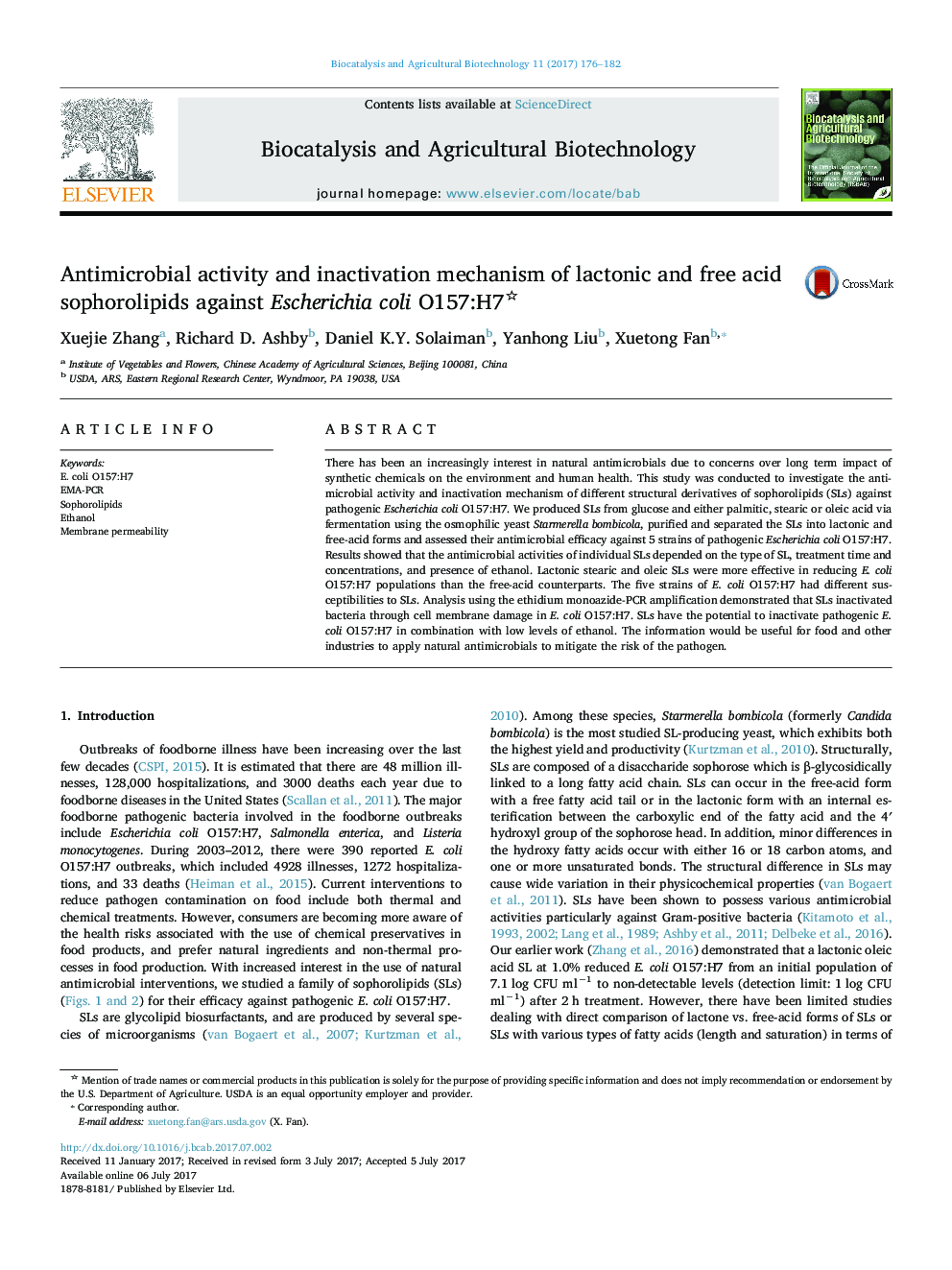| Article ID | Journal | Published Year | Pages | File Type |
|---|---|---|---|---|
| 5520533 | Biocatalysis and Agricultural Biotechnology | 2017 | 7 Pages |
â¢Lactonic stearic and oleic acid sophorolipids were more effective against E. coli O157:H7 than free-acid forms.â¢Sensitivities to sophorolipids varied among the five strains of outbreak-associated E. coli O157:H7.â¢Sophorolipids caused membrane damage to E. coli as indicated by the EMA-PCR assay.â¢Ethanol was required for sophorolipids to inactivate E. coli O157:H7.
There has been an increasingly interest in natural antimicrobials due to concerns over long term impact of synthetic chemicals on the environment and human health. This study was conducted to investigate the antimicrobial activity and inactivation mechanism of different structural derivatives of sophorolipids (SLs) against pathogenic Escherichia coli O157:H7. We produced SLs from glucose and either palmitic, stearic or oleic acid via fermentation using the osmophilic yeast Starmerella bombicola, purified and separated the SLs into lactonic and free-acid forms and assessed their antimicrobial efficacy against 5 strains of pathogenic Escherichia coli O157:H7. Results showed that the antimicrobial activities of individual SLs depended on the type of SL, treatment time and concentrations, and presence of ethanol. Lactonic stearic and oleic SLs were more effective in reducing E. coli O157:H7 populations than the free-acid counterparts. The five strains of E. coli O157:H7 had different susceptibilities to SLs. Analysis using the ethidium monoazide-PCR amplification demonstrated that SLs inactivated bacteria through cell membrane damage in E. coli O157:H7. SLs have the potential to inactivate pathogenic E. coli O157:H7 in combination with low levels of ethanol. The information would be useful for food and other industries to apply natural antimicrobials to mitigate the risk of the pathogen.
